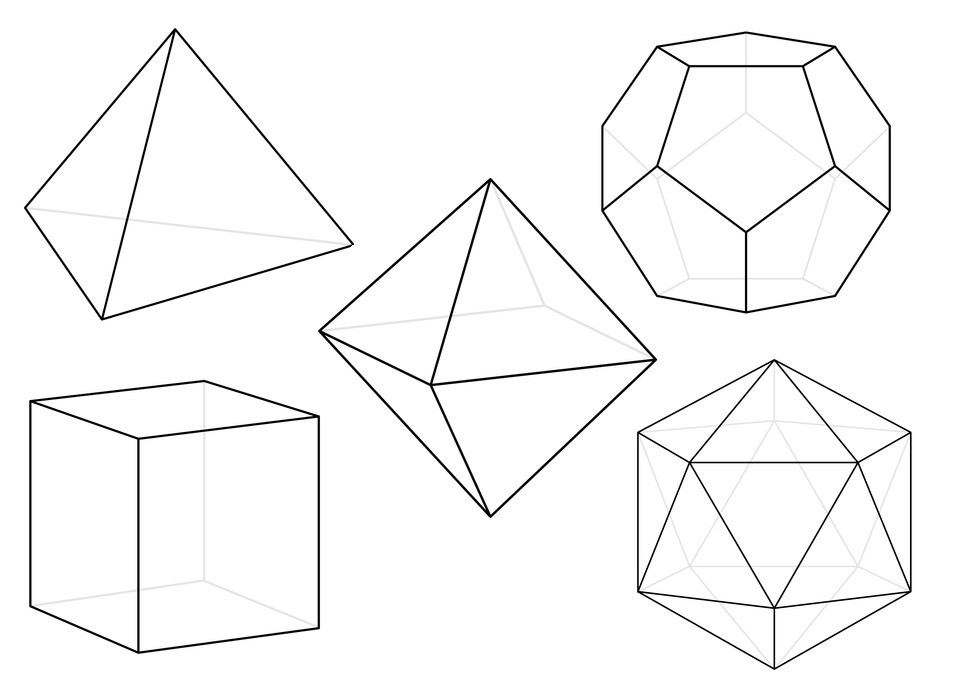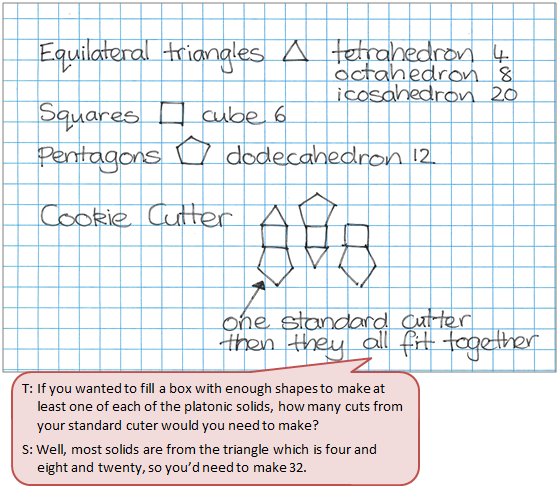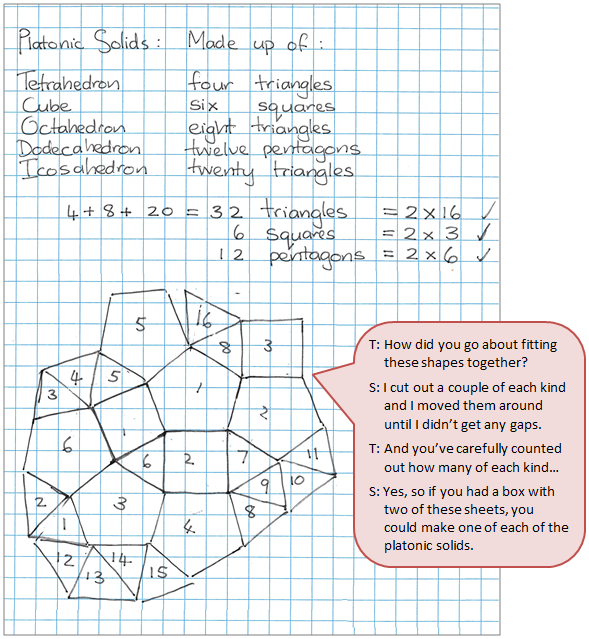The purpose of this activity is to engage students in solving a problem requiring identifying and using regular polygons.
This activity assumes the students have experience in the following areas:
- Identifying the features and properties of polygons.
- Recognising the properties of regular polygons, including angles and sides.
- Connecting the properties of regular and irregular polygons to find similarities and differences.
The problem is sufficiently open ended to allow the students freedom of choice in their approach. It may be scaffolded with guidance that leads to a solution, and/or the students might be given the opportunity to solve the problem independently.
The example responses at the end of the resource give an indication of the kind of response to expect from students who approach the problem in particular ways.

A biscuit company want to make crackers in the shape of regular polygons that they can advertise as being able to be stuck together (with cream cheese) to make platonic solids.
- Read about platonic solids, so you can find out what shapes the crackers in the box need to be.
- Design a cookie cutter that the company could use to make these shapes.
The following prompts illustrate how this activity can be structured around the phases of the Mathematics Investigation Cycle.
Make sense
Introduce the problem. Allow students time to read it and discuss in pairs or small groups.
- Do I understand the situation and the words? (Students may need support to understand the Platonic solids and how they are made from only one regular polygon.)
- What considerations are needed to create a cookie cutter that will work for the biscuit company?
- Should the cutter make the same number of each shape? Why or why not?
- How might I create regular polygons when designing the cookie cutter?
- What will my solution look like? (The solution will be a cookie cutter design that contains the correct shapes in a ratio that matches the numbers needed to make Platonic solids.)
Plan approach
Discuss ideas about how to solve the problem. Emphasise that, in the planning phase, you want students to say how they would solve the problem, not to actually solve it.
- What information do I need about the Platonic solids to find a solution? (The regular polygons that make up the solids, and the number of each shape to make a full set of 5 solids.)
- What are the maths skills I need to work this out? (Knowledge of the internal angles of regular polygons will be important.)
- How might I find out the information I need?
- What strategies can I use to get started? (Practically building the Platonic solids with connecting shapes will be useful for many students)
- Are there patterns in the shapes that might help me?
- What tools (digital or physical) could help my investigation? (Students might use protractors and rulers, or digital drawing platforms.)
Take action
Allow students time to work through their strategy and find a solution to the problem.
- Is my strategy working?
- Have I worked out the shapes I need?
- Have I worked out the number of each shape I need? How?
- Does my cookie cutter design match this information?
- How have I drawn each shape so it is regular?
- Do my shapes of my cutter fit together so cookie mixture is not wasted?
Convince yourself and others
Allow students time to check their answers and then either have them pair share with other groups or ask for volunteers to share their solution with the class.
- What is the solution? Is it the best cookie cutter design? Why?
- Is my working clear for someone else to follow?
- How would I convince someone else I am correct?
- Could I have solved the problem in another way?
- Which ideas or tools worked well in my investigation?
- What maths did I learn?
- How can I use what I learned in other situations?
Examples of work
Work sample 1
The student identifies the polygons required to make each of the five Platonic solids. They create a cookie cutter that combines the equilateral triangle, square, and regular pentagon.
Click on the image to enlarge it. Click again to close.
Work sample 2
The student identifies the polygons required to make each of the five Platonic solids. They create a cookie cutter that combines the equilateral triangle, square, and regular pentagon in a ratio that matches the numbers of each shape that form the Platonic solids.

